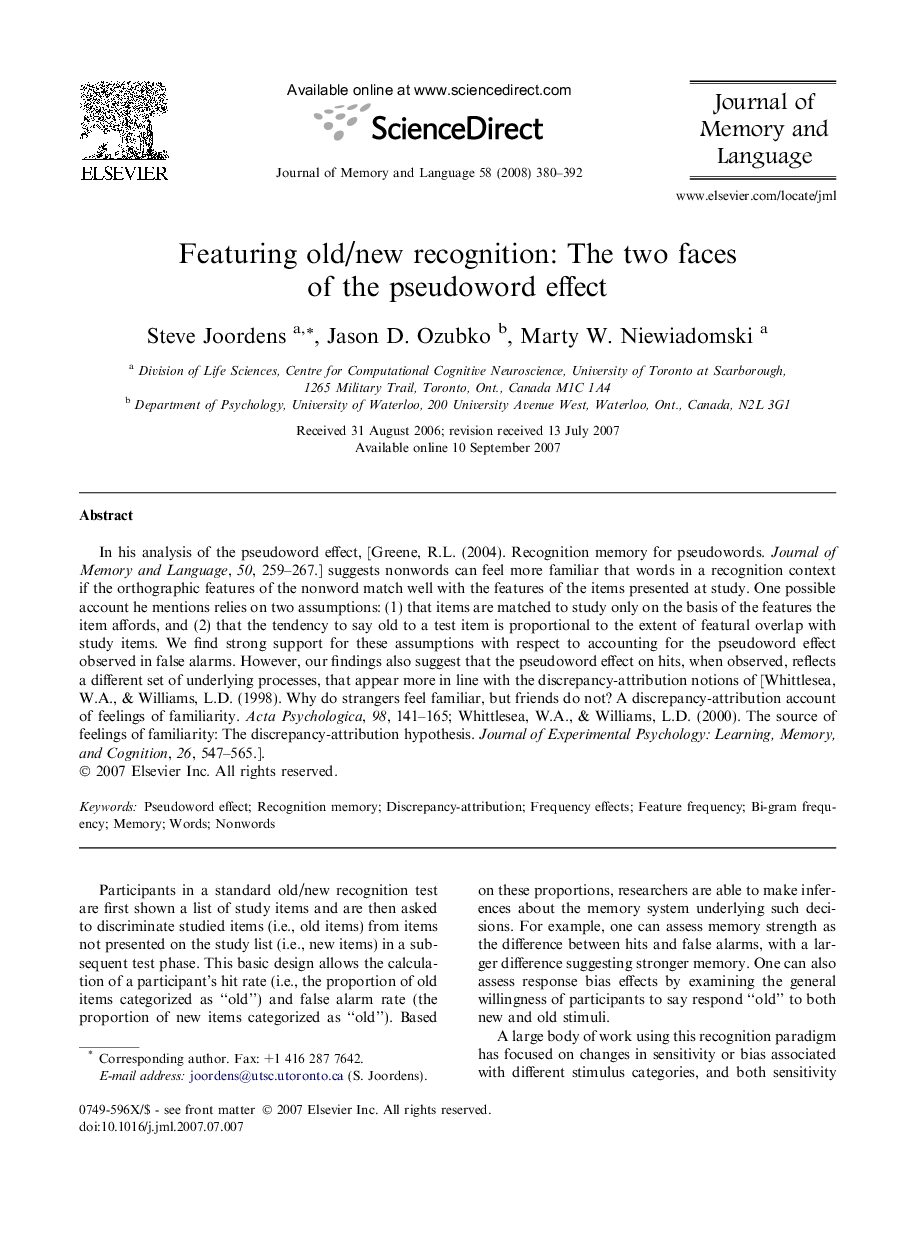| Article ID | Journal | Published Year | Pages | File Type |
|---|---|---|---|---|
| 932278 | Journal of Memory and Language | 2008 | 13 Pages |
In his analysis of the pseudoword effect, [Greene, R.L. (2004). Recognition memory for pseudowords. Journal of Memory and Language, 50, 259–267.] suggests nonwords can feel more familiar that words in a recognition context if the orthographic features of the nonword match well with the features of the items presented at study. One possible account he mentions relies on two assumptions: (1) that items are matched to study only on the basis of the features the item affords, and (2) that the tendency to say old to a test item is proportional to the extent of featural overlap with study items. We find strong support for these assumptions with respect to accounting for the pseudoword effect observed in false alarms. However, our findings also suggest that the pseudoword effect on hits, when observed, reflects a different set of underlying processes, that appear more in line with the discrepancy-attribution notions of [Whittlesea, W.A., & Williams, L.D. (1998). Why do strangers feel familiar, but friends do not? A discrepancy-attribution account of feelings of familiarity. Acta Psychologica, 98, 141–165; Whittlesea, W.A., & Williams, L.D. (2000). The source of feelings of familiarity: The discrepancy-attribution hypothesis. Journal of Experimental Psychology: Learning, Memory, and Cognition, 26, 547–565.].
